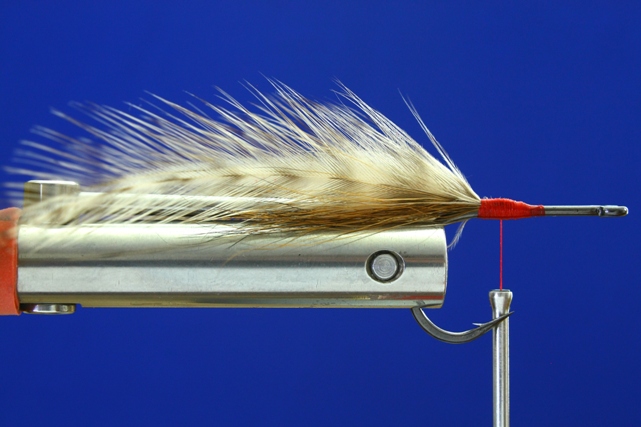Home | Saltwater Flies | Fly Tying Materials | Saltwater Fly Fishing Accessories
Ordering Instructions, Shipping rates, Your Satisfaction Guaranteed | Site Map
Tying the Cockroach Tarpon Fly
Article and photos by Blake Davis

| Tarpon - the "Silver King" - is one of the most impressive gamefish that swims, and this incredibly strong and wary fish lures fly fishermen from all over the world to the warm waters where it is found - good tarpon habitats can be found in Florida and around many islands in the Caribbean, on down to Mexico, Belize, and Costa Rica. The west African coastline also hosts large fish. Tarpon (taxonomic name Megalops atlanticus) can reach eight feet and length and the giants among them can weigh more than two hundred pounds - a bulk they display with the most dramatic kind of aerobatics when hooked. The capture and release of even an average sized tarpon on fly is one of the ultimate trophies in saltwater fly fishing. |
| The Cockroach is a classic pattern that evolved in the Florida Keys fishery in the days before the modern era of synthetic fly tying materials. Tied to imitate shrimp and other crustaceans, it is dressed sparsely, tied mostly with natural materials and constructed on a very strong, sharp hook. The "original" dressing often called for a collar made of bucktail or squirrel hair, but this version uses rabbit fur & hackle for the collar for added life & movement. The Cockroach can be used anywhere tarpon are found, but it is an especially important pattern for casting to tarpon in the clear water of the Florida Keys and the Gulf of Mexico. |




